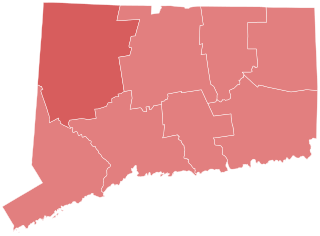
The 1964 United States Senate elections were held on November 3. The 33 seats of Class 1 were contested in regular elections. Special elections were also held to fill vacancies. They coincided with the election of President Lyndon B. Johnson by an overwhelming majority, to a full term. His Democratic Party picked up a net two seats from the Republicans. As of 2023, this was the last time either party has had a two-thirds majority in the Senate, which allowed the Senate Democrats to override a veto, propose constitutional amendments, or convict and expel certain officials without any votes from Senate Republicans. However, internal divisions would have prevented the Democrats from having done so. The Senate election cycle coincided with Democratic gains in the House in the same year.

The 1946 United States Senate elections were held November 5, 1946, in the middle of Democratic President Harry S. Truman's first term after Roosevelt's passing. The 32 seats of Class 1 were contested in regular elections, and four special elections were held to fill vacancies. The Republicans took control of the Senate by picking up twelve seats, mostly from the Democrats. This was the first time since 1932 that the Republicans had held the Senate, recovering from a low of 16 seats following the 1936 Senate elections.

The 1944 United States Senate elections coincided with the re-election of Franklin D. Roosevelt to his fourth term as president. The 32 seats of Class 3 were contested in regular elections, and three special elections were held to fill vacancies.

Francis Thomas Maloney was a U.S. Representative from Connecticut from 1933 to 1935 and a U.S. Senator from Connecticut from 1935 to 1945. He was a Democrat.

West Virginia's 2012 general elections were held on November 6, 2012. Primary elections were held on May 8, 2012.

The 1934 United States Senate election in Connecticut was held on November 6, 1934. Incumbent Republican Senator Frederic C. Walcott ran for re-election to a second term, but was defeated by Democratic U.S. Representative Francis T. Maloney.

The 1932 United States Senate election in Connecticut was held on November 8, 1932. Incumbent Senator Hiram Bingham III ran for a second full term in office but was defeated by Democratic U.S. Representative Augustine Lonergan. This was the first time since 1879 that Democrats won this Senate seat, and the first since 1881 that they won either seat.

Two United States Senate elections in Connecticut were held on November 5, 1946, to determine the next United States Senator from Connecticut. One election determined who would complete the remainder of deceased Senator Francis T. Maloney's term and the other was for the regularly-scheduled term from 1947 to 1953.

The United States Senate election of 1942 in New Jersey was held on November 3, 1942. Incumbent Democratic Senator William Smathers ran for re-election to a second term, but was defeated by Republican businessman Albert Hawkes.

The United States Senate election of 1938 in New York was held on November 8, 1938. Incumbent Democratic Senator Robert F. Wagner was re-elected to a third term over Republican John Lord O'Brian.

The 1938 United States Senate election in Missouri took place on November 8, 1938 in Missouri. The incumbent Democratic Senator, Bennett Champ Clark, was re-elected with 60.69% of the vote. He defeated Republican candidate and former Governor of Missouri Henry S. Caulfield.

The 1938 United States Senate election in Indiana took place on November 8, 1938. Incumbent Democratic Senator Frederick Van Nuys was narrowly re-elected to a second term in office over Raymond E. Willis by a margin of 5,197 votes out of over 1.5 million cast.

The 1944 United States Senate special election in New Jersey was held on November 7, 1944.

The 1956 United States Senate election in Indiana took place on November 6, 1956. Incumbent Republican U.S. Senator Homer Capehart was re-elected to a third term in office, defeating former U.S. Secretary of Agriculture Claude Wickard.

The 1916 United States Senate election in Connecticut was held on November 7, 1916. Incumbent Republican Senator George P. McLean was re-elected to a second term in office over Democratic State Attorney Homer Stille Cummings.

The 1940 United States Senate election in Indiana took place on November 5, 1940. Incumbent Democratic U.S. Senator Sherman Minton ran for re-election to a second term, but lost narrowly to Republican Raymond E. Willis.

The 1964 United States Senate election in Indiana took place on November 3, 1964. Incumbent Democratic U.S. Senator Vance Hartke was re-elected to a second term in office over Republican D. Russell Bontrager.
A Massachusetts general election was held on November 2, 1954 in the Commonwealth of Massachusetts.
The 1948 Massachusetts general election was held on November 2, 1948, throughout Massachusetts. Primary elections took place on September 14.
The 1946 Massachusetts general election was held on November 5, 1946, throughout Massachusetts. Primary elections took place on June 18.





















